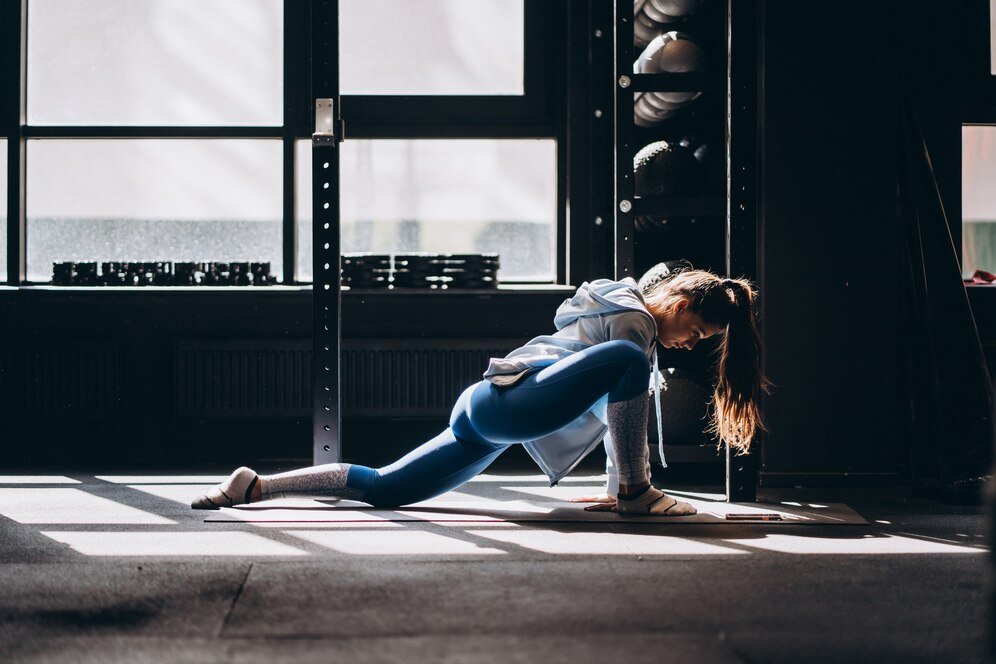Ready to take your strength training regime up a notch?
Whether you are an experienced weightlifter or just getting started, trying new exercises is always a great way to push yourself and level-up your results.
In this blog post, we'll be exploring some of the best strength training exercises for women, offering tips and advice on how to make them work for you and provide maximum benefit.
So, if you're ready to get fit, strong, and healthy - let's get right into it:
Strength Training Exercises For Women At Home
Here are a couple of strength training workouts every woman can do at home:
1. Squats

Squats are a fundamental compound exercise that targets the muscles in your lower body, including the quadriceps, hamstrings, and glutes. Additionally, squats engage your core for stabilization.
Performing squats regularly can enhance overall lower body strength, improve flexibility in the hips and ankles, and contribute to better functional movement patterns.
They are also known to stimulate growth hormone release, making them an efficient exercise for those looking to build muscle mass.
Starting Position
- Stand with your feet shoulder-width apart.
- Keep your chest up and shoulders back.
- Engage your core for stability.
Descending (Lowering)
- Hinge at your hips and push them back.
- Bend your knees and lower your body as if sitting back into a chair.
- Keep your back straight, chest up, and knees in line with your toes.
Ascending (Lifting)
- Push through your heels.
- Straighten your legs and return to the starting position.
- Keep your core engaged throughout the movement.
2. Deadlifts

Deadlifts are a powerful full-body exercise for women that primarily targets the muscles in your posterior chain, including the hamstrings, glutes, and lower back. They also engage your core, forearms, and grip strength.
Deadlifts are highly effective for building overall strength and muscle mass, promoting good posture, and enhancing your body's ability to lift and carry objects safely.
Additionally, due to the involvement of multiple muscle groups, deadlifts can contribute to an increased metabolic rate and improved calorie burn.
Starting Position
- Stand with your feet hip-width apart.
- Place a barbell in front of you, close to your shins.
- Bend at your hips and knees to lower your body and grasp the barbell with an overhand grip.
- Lifting:
- Keep your back straight, chest up, and shoulders back.
- Lift the barbell by straightening your hips and knees simultaneously.
- Stand tall, extending your hips fully.
- Reverse the movement to lower the barbell back to the ground.
3. Bench Press

The bench press is a classic upper-body strength training workout that primarily targets the chest, shoulders, and triceps. It is an excellent compound movement for building upper body strength and muscle mass.
Bench presses also engage the stabilizing muscles in the core and upper back.
Regularly incorporating bench presses into your workout routine can improve pushing strength, enhance muscle definition in the chest and shoulders, and increase bone density.
Starting Position
- Lie on a flat bench with your eyes aligned with the bar.
- Grip the barbell with hands slightly wider than shoulder-width apart.
- Plant your feet firmly on the ground.
Lifting
- Lower the barbell to your chest while keeping your elbows at a 90-degree angle.
- Push the barbell back up to the starting position.
- Keep your back and head on the bench throughout the movement.
4. Lunges

Lunges are a versatile exercise that targets the muscles in the legs, including the quadriceps, hamstrings, and glutes. They also engage the core for balance and stability.
Lunges contribute to improved unilateral strength, helping to address muscle imbalances between the left and right sides of the body.
This at-home strength training exercise is beneficial for enhancing lower body flexibility, stability, and functional movement, making it particularly useful for daily activities and sports.
Starting Position
- Stand with your feet together.
- Take a step forward with one foot, maintaining a hip-width stance.
Descending (Lowering)
- Lower your body until both knees are bent at a 90-degree angle.
- The back knee should hover just above the ground.
Ascending (Lifting)
- Push off the front foot to return to the starting position.
- Repeat on the other leg.
5. Bent-over Rows

Bent-over rows are effective for targeting the upper back muscles, including the latissimus dorsi, rhomboids, and traps. This exercise also engages the biceps and forearms.
Incorporating bent-over rows into your strength training routine can help improve posture, strengthen the muscles responsible for pulling movements, and enhance overall upper-body muscle development.
Maintaining a proper back position is crucial to avoid unnecessary strain and maximize the benefits.
Starting Position
- Stand with feet shoulder-width apart.
- Hold a barbell or dumbbells in front of you with a pronated grip.
Lifting
- Hinge at your hips, keeping your back straight.
- Pull the weight towards your lower chest, squeezing your shoulder blades together.
- Lower the weight back to the starting position.
6. Planks

Planks are a core-strengthening exercise that targets the muscles in the abdomen, back, and shoulders.
This static exercise helps build endurance in the core muscles, promoting a stable and well-supported spine. Planks are known for their effectiveness in reducing the risk of lower back pain, improving posture, and enhancing overall core strength.
Additionally, planks engage the muscles without putting excessive stress on the spine, making them a safer alternative to traditional sit-ups for abdominal development.
Starting Position
- Start in a plank position with your forearms on the ground.
- Elbows should be directly beneath your shoulders.
Holding
- Engage your core and keep your body in a straight line from head to heels.
- Hold the position, maintaining a neutral spine.
- Aim to hold for a set duration, gradually increasing over time.
Final Verdict
With the right strength exercises for women, your workouts can become more enjoyable and effective.
It's important to remember that no two people are the same and each person may have different preferences for what works best for them when it comes to strength training.
That's why it is essential to experiment with different types of exercises and find one that you enjoy and can stick with for the long term.



